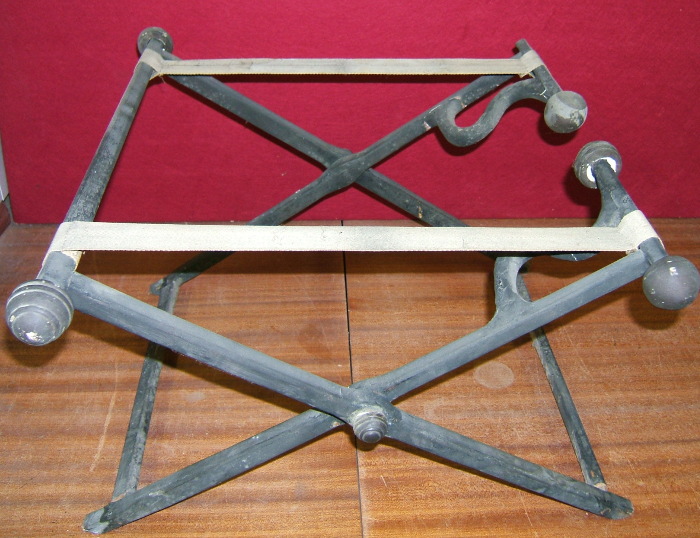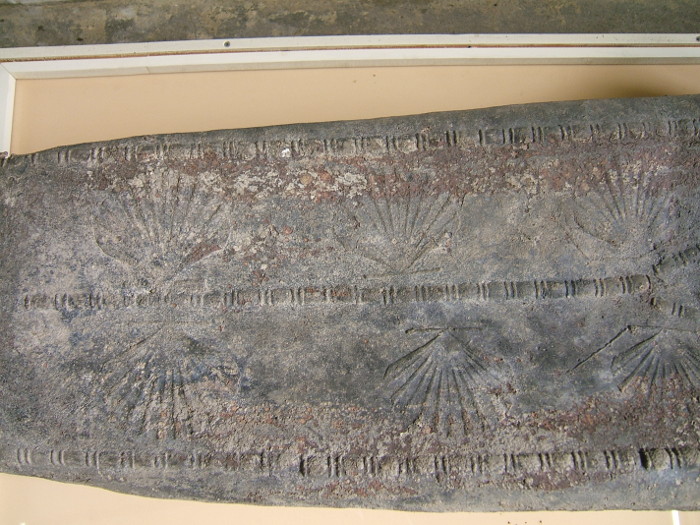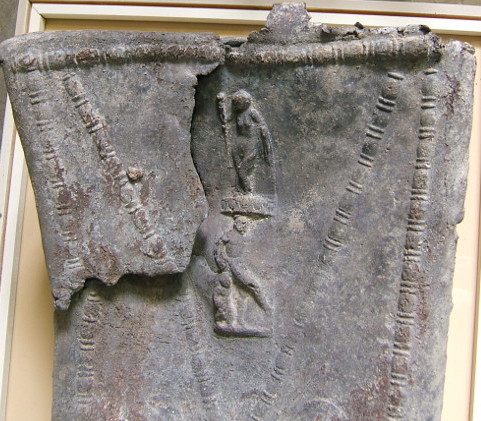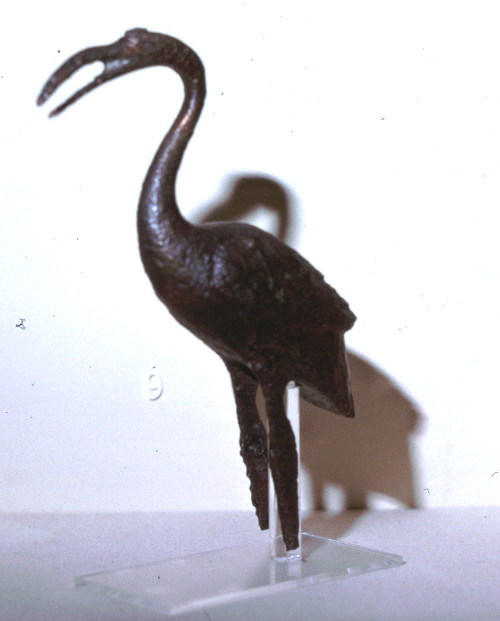SNODLAND:
CHAIR BURIAL, CHILD'S LEAD COFFIN AND A BRONZE IBIS
UPDATED
Denis Anstey
Acknowledgements:
Imaging facilities courtesy of Maidstone Museum and
Bentliff Art Gallery (lead coffin and Chair)
Imaging facilities courtesy of Guildhall Museum
Rochester (bronze ibis)
This article has
been prepared on the basis of new information.
In the 1950s a
number of excavations were undertaken on Holborough Hill
(a.k.a. the nob) at Snodland prior to quarrying and the
destruction of the sites. The dig of interest so
far as this article is concerned is that of the Roman
tumulus.
A child's lead
coffin was discovered as spoil was being cleared from
the site. The local newspapers should be consulted
as to the circumstances.
The Chair Burial
The Eccles Roman
Villa was excavated in the 1960s and 70s. The
Tumulus would have been clearly visible from Eccles and
prominent in the landscape.
The Tumulus was
also just across the river from the Roman building
at Burham (01) and to its west. Much closer and
very prominent in the landscape.
A copy of the chair.

The Lead Coffin
Images of the lead
coffin




Bronze Ibis

During the
installation of the new washmill plant at Holborough
Cement works in the early '50s', the civil contractors
had workshops and huts on site in the quarry below the
tumulus on 'The Knob' Hill.
In one hut a workman
lived and acted as watchman.
When the civil work
was completed this watchman gave the witness the ibis
before he left the site.
Realising its
obvious antiquity he contacted the watchman to establish
where he had found it. The tumulus was being
excavated by initially bulldozing the top over the edge
of the quarry. It was at that point below the
tumulus that the watchman picked the ibis up.
The witness asked a relative, who worked near the Guildhall museum, to deliver it.
(lodged with Snodland Historical Society)